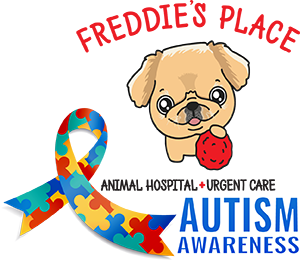When is it right, if ever, to use a retractable leash?
 Did you know that across the nation, emergency rooms see over 20,000 patients a year for injuries related to retractable dog leashes? It’s true… and of those 20k people, over 10% are children ages 10 and younger. A quarter of the injuries are related to hand or finger injuries, some of the injuries so serious that they required amputations of digits. Burns and cuts on the hands from the rapid leash retraction garner the most casualties but eyes, legs, torsos, faces, or injuries from falls or pulls are listed as “danger zones” for leash accidents. And this is just the HUMAN number of injuries.
Did you know that across the nation, emergency rooms see over 20,000 patients a year for injuries related to retractable dog leashes? It’s true… and of those 20k people, over 10% are children ages 10 and younger. A quarter of the injuries are related to hand or finger injuries, some of the injuries so serious that they required amputations of digits. Burns and cuts on the hands from the rapid leash retraction garner the most casualties but eyes, legs, torsos, faces, or injuries from falls or pulls are listed as “danger zones” for leash accidents. And this is just the HUMAN number of injuries.
When you start to see the numbers of dogs injured and treated for retractable leash related accidents, the impact of design flaws and improper usage is clear. Over 350,000 injuries attributed to this type of leash were reported by veterinarians nationwide, and that’s just “reported.” Unknown numbers of dogs (and humans) have low impact injuries, or damage NOT reported. The injuries to dogs can be broken down into body areas; shoulders, throat/neck, foot/leg, and even injuries from humans falling on the dog are all common. Dogs pull against the tension of the lead and that can cause back/neck damage. Running at the full length of the leash, then coming to the end and violently being snapped backwards can damage shoulders, necks and can cause catastrophic injury that requires emergency surgery. Dogs often get tangled in the longer leads, which can get wrapped around legs, feet and neck areas. Burns from the fast retraction have also been reported on canines.
The possibility of injury due to the misuse of the leads is also high and climbing yearly. Some owners “free release” the leash, then “snap back” in small, but violent, tugs to shorten the distance and regain control. Dog on dog violence is also always a possibility, as two dogs meeting on the more loose and free retractable leads can get tangled, or end up in a fight before control can be gained. Faulty or damaged retractable leads can allow Rover to break free, or their guide to loose tension and control in an instant. People often use the wrong size retractable lead for the dog being walked. This can cause injuries and suddenly unleashed dogs simply because of improper use of the product.
More than 50% of our states have put restrictions on the use of the retractable leashes. Let’s be clear, it’s not illegal to own one, but how and where you can use it has been legislated in more than half of our states. And in the states themselves, some cities have passed sweeping changes in leash laws that include breed restrictions and how far you can allow your dog away from you on the spring load leash. There are areas of the country where retractable leashes have been banned completely.
DogValy.com lists the following as reasons you should NEVER use a retractable leash;
Understand, this is NOT a hit job on the retractable leash. There are owners who can use this leash type correctly, and safely. Our negative reaction surrounds the statistics and facts of owners misusing the lead, mostly due to a misguided sense of freedom for their dog, and lazy habits formed from misinformation on the use of the leash. If used correctly, the retractable leash is safe 90% of the time for most dogs and owners.
So, if the retractable leash is out, what is an owner to do when they want to take their fur friends out on a walk? It’s simple, old fashioned one piece, fixed leads do the trick. Even better is a reliable harness for your pooch. This will shift the pressure and control point to the dogs back, and eliminating the full force of control being on the neck and throat areas. Not to mention, the non-mechanical leashes and harnesses are fashion friendly, coming in endless colors and patterns to choose from. Making your pet into a fashionista is a snap when you accessorize.
Regardless of what you choose to use, if you follow these simple steps, using a leash isn’t difficult;
Most dogs will learn the lay of the land, on the leash, in 7 to 10 days of practice. The road may not be easy at the start, but again, dogs live to please their owners. Be assured that the vast majority of dogs pick up leash leading in a short amount of time. Teaching your dog the correct steps to a safe and fun leash walk experience is important to their health and safety. They will enjoy the together time in the fresh air, and you will have the peace of mind that you are ready for all potential danger or tight quarters situations that happen in the course of your walk.
When is a retractable leash acceptable?
Learn your local community and state regulations surrounding the retractable leash, but also learn where they are easiest and safest to use. Consider where you’ll be walking and know your route whenever possible. If you’re walking where potential close encounters with strangers are possible, the retractable leash might not be the best option. However, if you’re doing out into an open field or uncrowded/dog friendly beach, the freedom of the retractable leash might increase the fun you have with your canine companion. If your dog is a runner or overly interested in other people or dogs, or is on the opposite end and timid around strange dogs, having the control of the standard leash and harness would likely give you more peace of mind.
If you must use the retractable leash make sure you get a good brand from a reputable company. Check out Google or Amazon reviews to see what is hot and what scores high in safety and reliable usage. Test out the leash prior to purchase, if possible. Get a size appropriate lead for your pet. Using a smaller retractable lead on a big dog increases the chance of breakage or pull away. Using a larger retractable lead on a small dog vastly increases the chance for physical injury from retraction and tangles. Be safe and assure the retractable leash you choose is appropriate for your dogs weight and size.
Your dog can’t choose their own leads, they seldom choose where they are walking, and they can’t know what dangers might lie ahead for them. All of those things are in the hands of their parents. Making the right choice for your dog is as easy as understanding the need, the dog, the situation and your personal limitations. Once you have the right leash, along with a well trained and mannered dog at the end of it… your worries are reduced and the fun can truly begin.
That’s our Dog Blog for this week. We sincerely hope you enjoyed the read, and maybe learned a few things along the way. The guilt and worry of knowing that your dog was injured in an avoidable accident is not worth taking a chance on an inferior or “wrong fit” product. As you would for your human children, take the time to research and train prior to putting your dog in a strange situation. This takes away the unknown and allows the good times to roll.
Come back next week to see what new words of wisdom await you, and ultimately what #FreddieSez! Have a fantastic and safe week with your special furry companions!





Leave A Comment